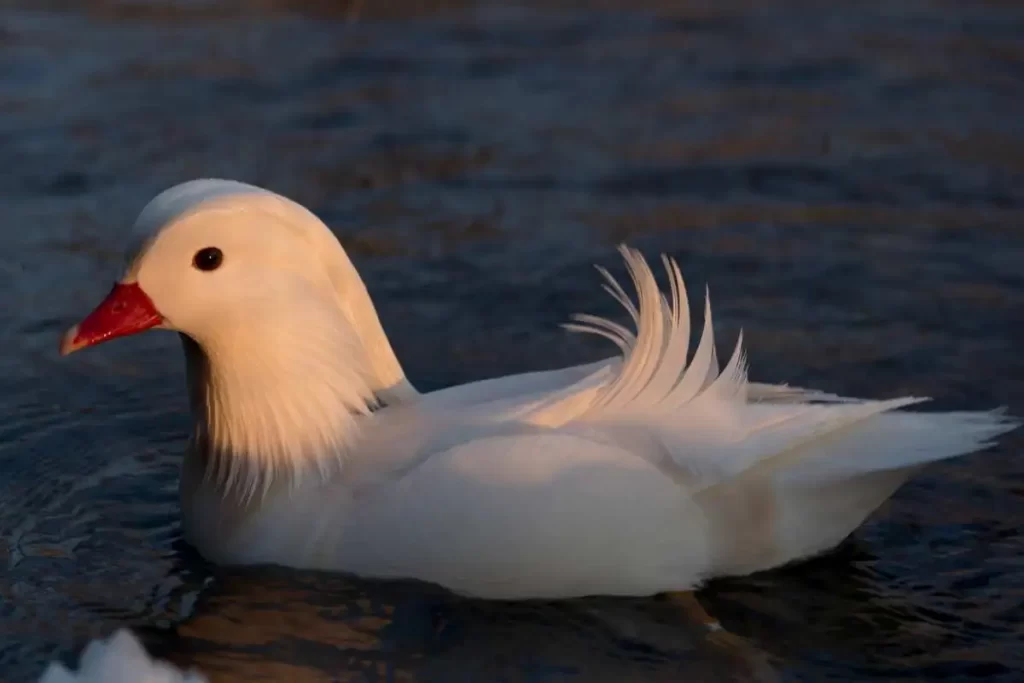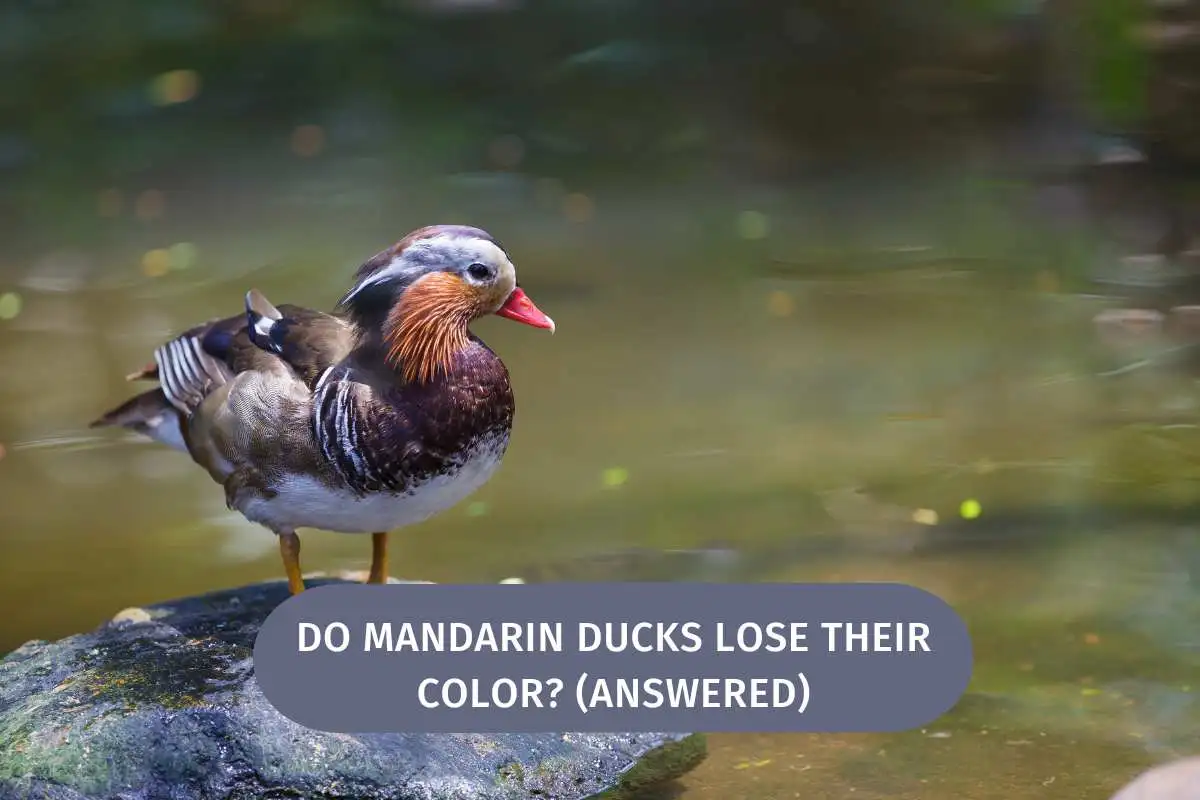Mandarin ducks are known for their unique and strikingly beautiful colors. They have a plumage of iridescent greens, purples, whites, and oranges that make them stand out from ordinary ducks. However, if you have a pet mandarin, you probably wondering about do mandarin duck lose their color?
The answer is yes and no. An adult mandarin duck typically does not lose color as they grow older. Young mandarin color is less vibrant at the early stage of their life compared to adult mandarin. However, due to exposure to sunlight, genetic disorder, and other environmental factors, mandarin colors can fade over time.
If you have a pet mandarin, with proper care and a balanced diet, you can keep your mandarin duck’s colors vibrant and healthy. Following are the tips to keep your mandarin duck looking its best:
- Provide adequate shelter for your mandarin duck, both indoors and outdoors. Exposure to direct sunlight can lead to fading of their feathers over time.
- Make sure to feed your mandarin duck a balanced diet. A healthy diet will keep their plumage looking its brightest.
- Give your mandarin duck periodic health checkups to monitor for any genetic disorders that could lead to color loss or other health issues.
- Regularly clean and groom your mandarin duck’s feathers to remove dirt and debris that can dull the colors.
By following the tips, I hope you can ensure that your mandarin duck’s colors remain vibrant and healthy for years to come.
Feel free to seek help from a professional veterinarian if you are ever concerned about the health of your mandarin duck. With proper care and maintenance, your mandarin duck will stay looking beautiful!
Mandarin duck color mutations

There are several color mutations of mandarin ducks. Mutation occurs because of a genetic disorder or when a mandarin interbred with other species of ducks. The following are the most common mandarin duck color mutations:
- Cinnamon: This mutation is characterized by a reddish-brown coloration on the breast and head, with the rest of the body being a pale pinkish-brown.
- Pastel: This mutation is characterized by a pale pinkish-brown coloration on the breast and head, with the rest of the body being a pale gray.
- Silver: This mutation is characterized by a silvery-gray coloration on the breast and head, with the remaining body pale gray.
- White: This mutation is characterized by a pure white coloration on the breast and head, with the remaining body pale gray.
- Golden: This mutation is characterized by a golden-yellow coloration on the breast and head, with the remaining body pale gray.
However, these mutations are not always stable and may not be passed on to future generations.
How do the mandarin ducks get their color?
Mandarin ducks get their colorful feathers from pigments called melanins, and structural coloration is caused by the way light interacts with the structure of the feathers.
Melanin’s are pigment molecules that are produced by cells called melanocytes. There are two types of melanin’s: eumelanin, which is responsible for producing brown and black colors, and pheomelanin, which is responsible for producing red and yellow colors. The amount and distribution of these pigments in the feathers determine the overall coloration of the mandarin duck.
Structural coloration is caused by the physical structure of the feathers rather than by pigments. It occurs when light reflects off the feathers in a way that produces different colors. For example, the iridescent green and purple colors of the mandarin duck’s breast are produced by structural coloration.
Color mutations in mandarin ducks occur when there are changes in the genes that control the production and distribution of melanins and other pigments. These mutations can result in changes in the overall coloration of the duck, such as the reddish-brown coloration of the cinnamon mutation or the pale pinkish-brown coloration of the pastel mutation.
Are male mandarin ducks more colorful than females?
Male mandarin ducks (also known as drakes) are generally more colorful than female mandarin ducks. The male mandarin duck has brightly colored feathers on the head, breast, and back, while the female is a more muted brown.
The male mandarin duck has a distinctive appearance: a bright orange-red bill, a green head, and purple breast. The rest of the body is a pale gray with white and black stripes on the wings and tail. In contrast, the female mandarin duck is a more subdued brown color with a lighter breast and a dark stripe on the wing.
There are some color mutations of mandarin ducks in which the females are more colorful than the males. For example, in the white mutation, the female may be entirely white, while the male may have some brown or gray markings. However, in most cases, the male mandarin duck is more colorful than the female.
Did I answer your question about do mandarin ducks lose their color?
Mandarin ducks get their colorful feathers from melanins and structural coloration. Color mutations in mandarin ducks can occur through changes in the genes that control the production of pigments. Male mandarin ducks are usually more colorful than female mandarin ducks, but there are some instances where females may be more colorful than males.
Frequently Asked Questions
Do male mallard ducks change colors? The answer is yes! These birds molt and replace their bright colors in the winter months with a duller, gray-brown look. This natural process is known as seasonal molt and happens in many birds, not just male mallard ducks.
Do male ducks change color? Male ducks (also known as drakes) do not undergo significant color changes throughout their lives. However, male ducks typically have more colorful feathers than females, as the bright colors attract mates and display dominance.
Are male ducks more colorful? With a resounding yes! Male ducks are much more colorful than female ducks. Many species of male ducks have vibrant colors and patterns that are difficult to find in female ducks. This is especially true with some species of mandarin, and wildfowl, such as the Mallard duck.

